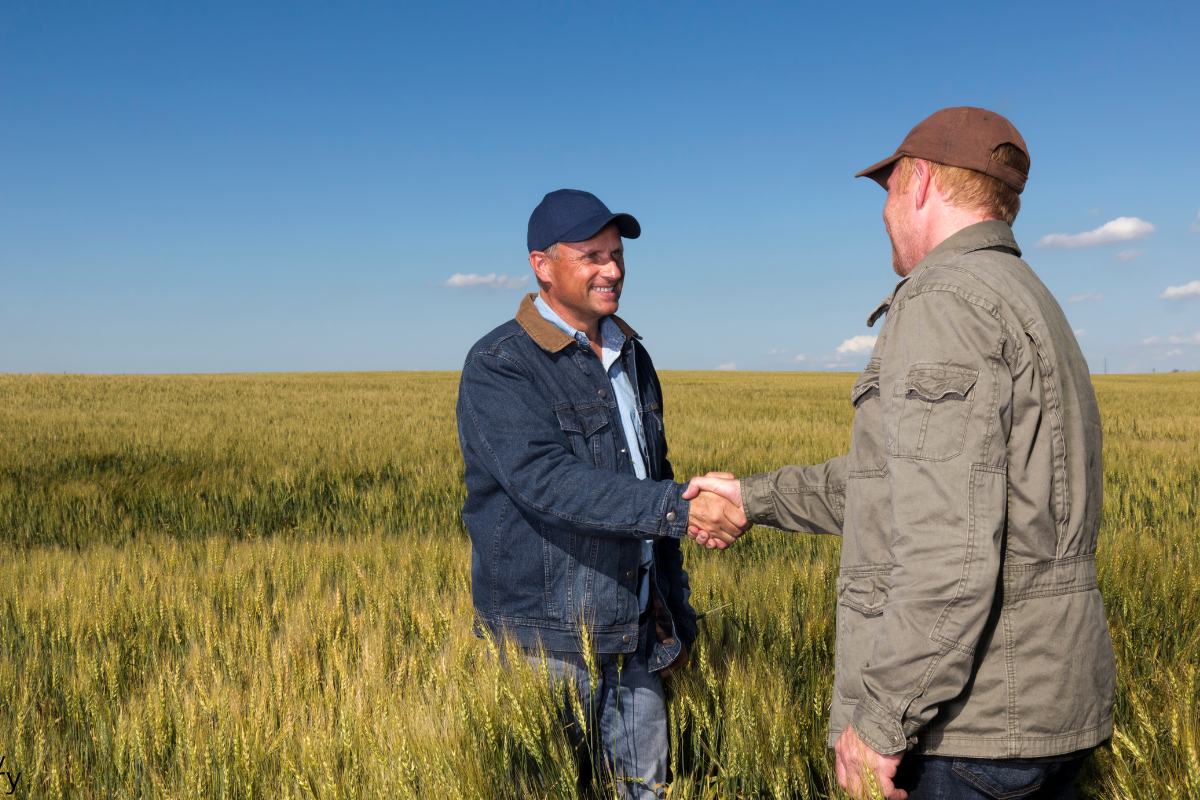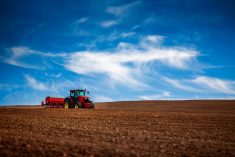I should make it clear from the start that when I set out to write about value chains, I was more than a tad skeptical. In my experience, value chains were nothing but a load of jargon, and the only reason we keep hearing anything about them at all is that consultants haven’t yet burned their way through all the government money out there to “educate” us about value chains.
When editor Tom Button asked me to look into value chains and report on whether, after a decade of talk, the concept was actually making any inroads, I told him I was pretty sure I already knew the answer. “Not much chance,” I told him.
Read Also

Are you ready for farm succession?
What motivates some farmers to make a succession plan while others don’t seem worried.
And so, on to my first interview.
I start with Martin Gooch, an expat from the U.K. who now calls Ontario home and conducts his studies out of the George Morris Centre in Guelph, Ont. Gooch is one of Canada’s go-to guys on value chains, speaking at conferences across the country and consulting with fledgling value-chain businesses.
When I ask Gooch why farmers should take notice of value chains his simple answer is “profitability.”
Then he expands it. A value chain, Gooch says, “captures value, reduces costs and increases revenue.” It does that, he says, by finding out as much as possible about the end-use market where the product is sold so it can deliver exactly what customers want. That way, there’s a potential premium for superior quality, and lower cost because you aren’t wasting time and money on traits that aren’t important to the buyer. In other words, you win on both sides of the balance sheet.
Still a bit skeptical, I ask Gooch if there is someone who is making the theory that I should talk to. There are lots of Canadian examples, Gooch responds, but one of the world’s best value-chain managers happens to be in Canada right at the moment we’re speaking.
It’s good to talk to the horse’s mouth, Gooch says, because in almost every successful value chain, there is one overriding champion, typically a charismatic person who has a vision and who is supported by the many others who are involved in the management and who ensure accountability.
Then Gooch tells me about Blade Farming. It’s a U.K. value chain, but it has a lot of lessons for any farmer in the business.
To learn more about Blade Farming, I speak to its creator and champion, Richard Phelps. Phelps started out in farming but then he took a position as a director with a U.K. meat processor. He had a lot of frustration at the outset, which led to him piloting a small value chain with one farm.
Phelps offered the farmer a contract and in return the farmer met certain meat quality standards and animal welfare standards, plus higher levels of environmental protection. “That small pilot offered us a marketing opportunity for the meat,” Phelps says. “From there, it’s grown into Blade Farming which is now 10 years old.”
Today Blade Farming has 160 finishing farms where the cattle get at least six months on grass. The value chain also has 14 calf rearers, where calves are delivered in batches and stay with the calf rearer for 12 weeks.
Blade Farming has a model for rearing which specifies formulas, stocking rates, pen size, and so on. The farmers are visited every two weeks and reviewed every six months. After 12 weeks, the calves are moved on to the finishing farms and the calf rearer has 10 to 14 days to clean and sanitize the barns for the next batch of calves. This helps break the pathogenic cycle, which in turn reduces disease, sickness, mortality and cost.
That mention of cost makes me think back to what Gooch said about value chains being effective not only because they generate higher revenues, but also because they reduce expenses. Phelps agrees wholeheartedly.
Because of disease control, feed is converted more efficiently and Blade Farming sees more consistent growth in healthier animals, Phelps tells me. But that’s just a start.
“We sell the calves to the rearers with a guarantee to buy them back,” explains Phelps. “We can help them reduce costs by buying the feed in bulk. This is actually good for the feed mills too, since we use the same formula at all our rearers. They have big storage bins, so the feed mill can use large trucks to make efficient deliveries. The same savings are also captured with vets and other inputs.”
Phelps recommends I visit his website, which does in fact give a good description of the Blade Farming approach to value-chain management. The site is at
Gooch had mentioned in my conversation with him that all layers of the value chain must make money or somehow gain — by reducing costs or whatever it might be. The Blade Farming example demonstrates this in spades. By co-ordinating the chain, it can function more efficiently and in this case position it to capture a premium, high-quality market for meat.
My next stop is with David Sparling, world-renowned expert in value chains. Sparling is chair of agri-food innovation and regulation and also a professor of operations management at the Richard Ivey School of Business at the University of Western Ontario, one the of Canada’s top business schools.
I spoke with him specifically to learn more about value chains and what they should mean to agricultural producers in Canada.
“The whole concept of value-chain management comes from supply-chain management,” Sparling tells me. “It’s all about moving goods efficiently, carrying minimum inventories, reducing costs and meeting customer expectations every time.”
But it’s also more than that, he says. It’s looking across the entire value chain instead of at each individual business in it. It’s looking at inventory, delays, and where the waste is. And it’s looking for ways to do things better and more efficiently.
“There are two ways to think of value chains,” Sparling says. “First, how can you retain and save value within the chain. It’s looking for ways to prevent product being wasted, reduce extra inventory and shipping costs and do everything possible to see the product is delivered to the consumer in the best possible condition. That’s especially important in agriculture where the products typically have a limited shelf life.
“Second, it’s to use the value chain to find new ways to capture new value through new products or in new markets. You can then tailor the chain to those new ideas.”
One of the key strategies in a value chain is to reduce the number of people you deal with, but to deal with those people even more closely and share more intelligence with them.
Success hinges on knowing who are the right people to partner with. “This is how President’s Choice operates,” Sparling explains. “Loblaw’s works with companies that come up with great ideas and they work together to test them and bring them to market.”
As more and more information is shared, better information systems are usually built, and then linked together. This facilitates the movement of information up and down the chain. “For instance, imagine a store in one part of town is noticing an increasing number of a certain ethnic group coming to shop. They can feed this information back down the value chain, and perhaps it results in more bok choy being grown locally to service, say, a growing Asian demographic… the consumer ends up getting what they want, and the farmer, the processor and the store also wind up better off providing the consumer with exactly what they want and need.”
Part of a successful value chain is consistency and commitment. “You can walk away when offered 10 cents more per bushel, or whatever it might be,” explains Sparling. “There’s more here than that. Committing to the value chain is almost more about reducing costs and becoming more efficient than it is about only price.”
Good examples of value chains abound, Sparling says. Thompson Grains in Ontario is part of a very successful value chain that supplies non-GMO soybeans from growers in Canada to Japanese processors. The growers adhere to strict growing protocols that are inspected by the Japanese. The latter have confidence in the growers’ management skills and Thompson Grain’s ability to then deliver the non-GMO soybeans to Japan.
So, by the end of my investigation into value chains and what they mean to farming, I was convinced that in the right circumstances (which basically means, when they’re organized with the right energy and attitude), value chains can indeed help farmers reduce costs, improve profits and even find new markets.
From there, trust is an outcome and the value chain becomes more efficient and able to respond to the changing environment, Gooch says. “If there is one thing you can count on in business, it’s a constantly changing environment.”
Gooch says there are five keys to building a successful value chain. Focus on the consumer, since they determine value; build and sustain constructive relationships; get the product right every time; develop effective logistics; and establish an efficient communication strategy along the entire chain and to consumers.
A value chain also needs inspiration, meaning it needs someone to inspire the troops, get them pointed at achievable goals, and then keep the energy level up so those goals are in fact achieved.
In fact, it may be the need for visionary leaders that puts a limit on the growth of value chains in Canadian agriculture, not any flaw in the value-chain proposition itself. However, Gooch and Sparling are convinced that new leaders are emerging, and new value chains will be developed.
“If you keep on doing what you’ve always done, you’ll keep on getting what you’ve always got,” says Gooch. “You need to be open to looking at new ways to do business and to be open to learning to do things better. That’s what value chains are about.”CG
Andrea Hilderman has worked in the grain industry for 20+ years. She writes from Winnipeg, Man. She has her master’s degree in weed science and is a member of the Manitoba Institute of Agrologists.
———
“ The farmer, the processor and the store end up better off.”
— David Sparling














